Beard Transplant: Should You Do It? (What You Need to Know)
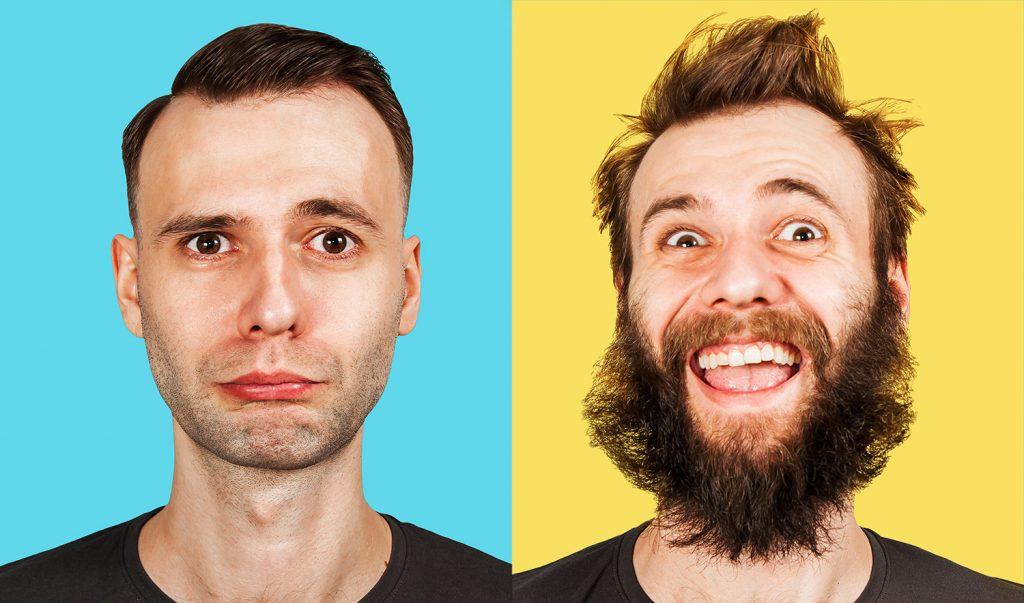
Many men have the desire to grow a thick, full beard. Not every man can make it happen, however, and that’s why procedures such as beard transplants have risen in popularity.
A beard transplant does what your genetics and other factors won’t allow you to do. Hair is taken from another part of your body (usually the scalp) and transplanted to your face, or wherever a beard or mustache may grow.
Beard transplants have come a long way, too. Professional beard and hair transplant facilities abound and technology keeps improving. Even better, you get to choose exactly the kind of beard you desire.
But is a beard transplant for you?
Let’s take a closer look, including at why your beard isn’t as full as you like and possible solutions.
My Beard Lacks Thickness – Why?
If you have a patchy beard, you’re not alone. The problem is, too many men with patchy beards throw up their hands and decide that growing a beard isn’t worth the trouble. And that’s too bad.
So, why do you have a beard that’s not as thick as a man who revels in full-bearded glory? Let’s look at some causes – while making it clear up front that there’s no reason to beat yourself up for it. Besides, there are solutions, which will get into a bit later.
1. Genetics
If your parents are tall, the chances are good that you’re tall, too. The same principles apply to beard growth: if your father (and his father) grew nice thick beards, the better your chances of growing one, as well.
Genetics, simply put, determine a lot about us, from hair color to even mental functioning.
The bottom line is that there’s not a lot we can do about our genetics.
We can’t take a pill that alters our genes and makes us take on what we feel are desirable traits. Still, if your beard is patchy, just like your dad’s and grandfather’s, hope is not yet lost. Read on.
2. Hormones
Hormones are often a prime suspect when it comes to the “why” of patchy beards.
Among scientific reasons for patchy growth is the fact that, for some men, the cheek area has weaker blood flow than other areas of the face. That’s important because it means that fewer nutrients and beard growing hormones make it to your cheeks.

Testosterone, the same hormone that got us through puberty and into manhood affects beard growth.
Men with lower testosterone sometimes have a harder time growing a full beard, although that’s not always the case.
While your beard follicles utilize testosterone, they also create DHT, which is kind of like testosterone’s bigger, more muscular brother. DHT has a big influence on male characteristics, mind you.
Now for some more science (bear with us): Your hair follicles need something called 5-alpha-reductase to utilize testosterone and DHT. If you don’t have enough 5-alpha-reductase, your beard growth is limited.
Here’s the kicker, however. Excess levels of DHT is one of the causes of male pattern baldness. So, you’re damned if you do, damned if you don’t regarding hair growth overall. The good news is that there are 5-alpha-reductase inhibitors available today.
3. Alopecia Areata
Most men don’t suffer from alopecia areata. Those that do, however, experience spot baldness that leaves small bald spots on hair-covered areas of your body, including your beard. It’s a fully treatable condition, however, and may even go away on its own.
Alopecia Areata is an autoimmune disease where your body attacks the hair follicles, resulting in bald patches on your head. It can also affect your beard, and it’s the main reason why guys choose to have beard transplants.
Alopecia Areata causes baldness in a single spot on your head — usually on the crown — and can also cause a patchy beard.
It’s not known what causes Alopecia Areata, but it tends to run in families. The good news is that it’s not contagious or life-threatening.
4. Lifestyle factors
We’re all told to get enough sleep, eat the right foods, get plenty of exercise, and to not stress out about things so much. All are good for your overall health, including your beard health.
As far as your diet goes, nutrients such as biotin and niacin help beard growth – at least many studies say that they do – so foods such as eggs, avocados, milk, fish, sunflower seeds, etc., should be a part of your regular diet.
No, you can’t change your genetics, but you can give your beard a fighting chance by leading a healthy lifestyle.
Why a Beard Transplant May Be Right For You (and it’s Pros and Cons)
While beard transplants are still relatively new, at least regarding the number of men who get them, the overall results have been good.
It’s not like you’d be rolling the dice between a natural-looking beard and one that looks like, well, the guy down at the corner garage did it.
Instead, chances are good you’ll like the results and soon will strut into your everyday life with the beard of your dreams.
So, back to the original question – why should you consider a beard transplant? Let’s take a look:
1. You get the beard that you want
We’re not just talking about a full, thick beard that looks like the one worn by a typical lumberjack of old. But one of the beauties of a beard transplant is that you get to choose the style of beard you want.
Indeed, all you have to do is tell your beard transplant specialist exactly where you want the hair to be transplanted and how much.
You choose the style, just as you’d choose the style of your haircut by looking at a picture in a magazine at your favorite hair salon or barbershop.
2. A bearded man is more attractive to women (and many other good things)

It happens to a lot of bearded men, and it’s just not hearsay. Several studies show that many women find men with facial hair more attractive than clean-shaven gents.
In a 2013 study, women said men with light stubble were the most attractive and, as the facial hair grew thicker, they found men increasingly more masculine (and a good parenting prospect).
Moreover, men who participated in the study felt that men with full facial hair looked more masculine than other men.
The study also suggests that women find men with an intermediate level of facial stubble to be more attractive as a sex partner. And, again, men with fuller beards earned high marks regarding potential parenting ability.
But wait – there’s more:
- Beards imply strength
Studies also show that men with beards seem stronger than other men and provide a sense of security.
- Beards imply intelligence
Just look at some of the famous bearded men: Freud, Einstein, Ernest Hemingway, as well as countless others like them. No one would say that these men weren’t smart.
- Beards balance sensitivity and edginess
Not that all bearded men are tough guys. Many also have a sensitive side and successfully combine both.
Women love guys who have an edge to them, like a beard helps provide, but also know how to be sensitive and romantic.
- Beards exude confidence
Beards not only make you seem more confident, but you’ll also feel more confident.
Whether it’s the feeling of masculinity, to the additional attention you get from others (not the least of which is from the opposite sex), to the fact that beards imply you’re more secure in your grooming skills, your confidence gets a nice boost.
- Beard transplants cause little pain
It might seem that taking hair from another part of your body and transplanting it into your facial region is painful.
The truth, however, is that it’s virtually pain-free. For one, the incisions made on your face are very minimal and won’t hurt much more than a small pinch, if at all.
- Beard transplants aren’t just for your beard
You can also have hair transplanted to your eyebrows and sideburns in much the same manner. Or, for that matter, transplanted to just about any part of your body.
- There’s very little recovery time
Today’s beard transplant procedures don’t entail nearly the amount of recovery time as in the past. You may experience some redness and slight swelling in the facial area for a few days after the procedure, but nothing too serious at all.
True, you may have to set aside a day for the transplant, but you can always use it as a sick day. While the procedure may take up to five hours (and potentially longer), a second round isn’t usually needed in most cases.
- You can shave and style your beard as normal
The dissected grafts of a beard transplant are permanent. That means you’re able to shave and style your beard like you normally would following the transplant procedure.
3. And now, for some disadvantages (of getting a beard transplant)
Beard transplants help men achieve exactly the bearded look they desire. They boost a man’s confidence and – as studies show – may make him more attractive to women.
But there are some disadvantages to getting a beard transplant, as well:
- It’s expensive
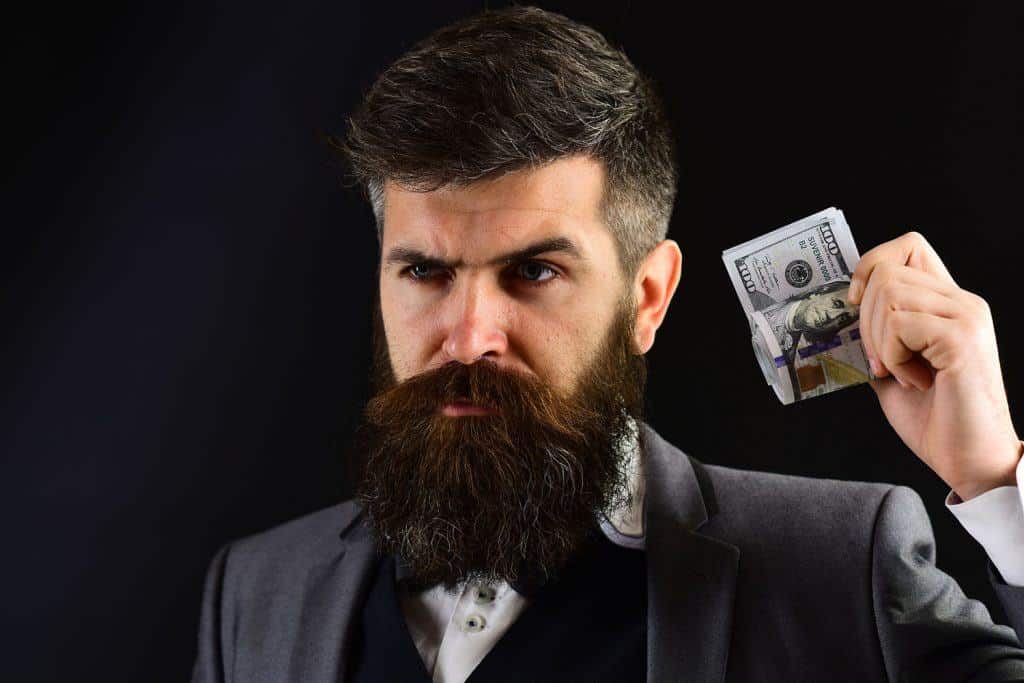
The procedure may cost as much as $7,000 – and more. True, you get the satisfaction and benefits of having a full beard, but it’s not cheap by any means. The question of how much does a beard transplant cost is an important one.
- You’ll sacrifice hair from other parts of your body
In many cases, the hair used for beard transplants comes from the back of your scalp because it closely resembles the hair that grows around your chin and cheeks.
But, hey, the hair has to come from somewhere, and it’s not like you’ll have visible bald patches on your scalp.
- Your transplanted hairs fall out in three weeks
Wait, what?
Yes, it’s true – a natural side-effect of a beard transplant is hair-shedding.
Don’t panic, however, because it’s a temporary side-effect and your hair will grow back fully during the time frame set by your doctor.
In other words, temporary shedding is simply part of the process of getting the beard you’ve always desired.
The Cost of a Beard Transplant
As previously mentioned, beard transplants aren’t cheap. Then again, when compared to other procedures that people use to enhance their looks, perhaps they’re not overly expensive by comparison.
And, if getting a full, great-looking beard is truly important to you, then the cost of a transplant – while certainly not secondary – is worth the investment to you, as well.
In any case, you can expect to pay anywhere from $5,000 to $15,000 for a beard transplant; that is, for one that’s done correctly by a reputable clinic.
You can find cheaper transplants, for sure, but make sure to evaluate the clinic thoroughly and check out the reviews of those who’ve had transplants done there.
Costs may vary from clinic to clinic and some centers may charge per graft.
So, the total cost is the number of grafts times the price per graft. Again, it depends on the clinic.
Other clinics, meanwhile, charge per session – but the price-per-graft model is helpful because some patients require more grafts than others.
Something else to consider is that some clinics charge a consultation fee which may cost up to $300 (but probably less).
If you need to consult with a dermatologist to determine why you’re unable to grow facial hair, then it’s likely that you’ll have to pay a fee of some kind.
Sure, you may be able to find some relatively inexpensive beard transplants but, again, make sure you know what you’re getting for the price.
The bottom line is that it’s always better to pay for a quality beard transplant than skimping on the cost and getting one that you’ll live to regret.
How it Works: Beard Transplant Basics & What You Need to Know
We’ve talked about a lot of things related to beard transplants but we also want to get down to the nuts and bolts of it all.
1. What is a beard transplant?
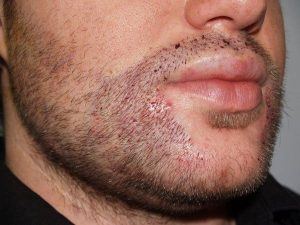
It’s more of a question of how it’s done than what it is, since the term beard transplant gives a pretty good idea of what we’re talking about overall. Here are the basics:
- The hair used for a beard transplant comes from another part of the patient’s head. Most commonly, the hair comes from the back of the head or from under the chin. The hair on your head has a slightly different structure and diameter than pre-existing beard hair, which may make it harder to match.
- Once the hair follicles are removed, the surgeon transplants them to bald patches in the beard area.
- An average of 4,000 to 7,000 hair follicle grafts are available in a typical beard transplant procedure, although for a full beard you may need only 2,500. Some surgeons may use two hairs per graft to give a more natural appearance to the beard.
- The surgeon must maneuver the hair at the proper angle to make it look like it’s growing in the right direction.
2. Types of Beard Transplants
The two major types of beard transplants are Follicular Unit Extraction (FUE) and Follicular Unit Transplantation (FUT).
Both involve a technique in which surgeons remove hair from the donor area.
In an FUE beard transplant, individual hairs are grafted one by one from the donor region and harvest over a larger area.
Only small, white circular scars are left behind. The surgeon is usually able to harvest one of every five follicles, but results vary by physician and the quality of the procedure.
FUE is the most common beard transplant procedure.
A FUT transplant involves taking a small strip of tissue from the donor area with a microscopic dissection process. The surgeon then closes the wound edge, leaving only a single, fine scar behind.
For further comparison, let’s look at some of the advantages of disadvantages of the two procedures. And, in most cases, the FUE procedure comes out on top.
- Among the pros of the FUE procedure are that it doesn’t leave a linear scar (as with the FUT procedure) and that it has a faster healing time. This has many obvious advantages, including that patients can return to regular physical activity quickly.
- The FUE procedure, as mentioned, leaves behind tiny white scars that are difficult to see, including in regions of the scalp where hair is short. While the scars may cover a wider area than the scars left by FUT, they’re hard to detect.
- The comfort level of the FUE procedure is greater than with FUT as most patients report little or no discomfort.
- A FUT strip harvests a greater amount of hair, which may make it easier to achieve maximum fullness for the transplant.
- The FUT donor strip comes from the mid-portion of a harvest zone to obtain the sufficient number of grafts.
3. The Beard Transplant Procedure: Before, During, and After

We’ve already talked a bit about how a beard transplant works, but potential transplant patients have – understandably – plenty of questions.
For instance, we talked about where the hair used in the transplant comes from, i.e., most often from the back of the scalp because the nature of that closely resembles that of facial hair.
Again, the transplant procedure, particularly during an FUE transplant, is relatively quick. In most cases, a facial hair transplant won’t take longer than five hours.
In very rare cases, the first hair graft won’t “take” and a second transplant may be needed. But let’s take a closer look at beard transplant before and after.
- Pre-Surgery
Patients need to take a few precautions before surgery, such as not taking any medication that contains aspirin 10 days before the transplant. Nor should patients take anti-inflammatory medications or drink alcohol three days before the procedure.
Taking a vitamin C tablet once a day for a full week before the transplant will aid the healing process.
On the day of surgery, avoid drinking caffeinated beverages in the morning as they may increase bleeding and sensitivity to medications.
- Post-Surgery
Small crusts form around the newly-transplanted hairs for the first five days or so after the procedure. If the crusting lasts longer than a week, you may want to contact your surgeon. Many surgeons advise not washing your face until the crusts have fallen off.
Common post-operative medications include an antibiotic that prevents infection in the donor area. The doctor may also prescribe an antibiotic ointment that you’ll apply to the donor area for us to five days after the transplant.
Don’t be concerned if your hair begins to fall out after two to three weeks. It’s a natural part of the process, but by three months you should notice a marked improvement in the amount and thickness of your facial hair.
Are there beard transplant side effects? Some, but nothing serious. They may include:
- Mild bruising
- Swelling
- Sensitivity at the donor and recipient sites
- Ingrown hair
- Redness
Patients typically resume shaving a week to 10 days after the transplant, while visible signs of the procedure usually subside within a week.
You should also keep the transplanted area dry for five days following surgery. Beard transplant recovery is typically problem-free with little or no pain.
Most patients also have concerns whether their transplanted beard will look natural. In the hands of a skilled surgeon and clinic, the answer is a resounding yes. That makes it even more important to do your research before choosing which clinic to do your procedure.
The Difference Between a Beard Transplant and a Hair Transplant
A common question among those considering a beard transplant is how the procedure differs from a hair transplant on the scalp.
While the differences aren’t necessarily major, one important difference is that the characteristics of scalp and beard hair have slight differences.
For one, beard and mustache hairs consist primarily of single-hair units.
Beard growth begins during puberty (although not always evident) and powered by androgens – male sex hormones, that is – and increases in density for approximately the next 20 years.
Meanwhile, the increased action of androgens causes hair loss on the scalp and may lead to male pattern baldness.
Specifically, hair follicles on the scalp, in some men, are more sensitive to certain male hormones.
It’s also worth noting that beard growth and density is different for men of different ethnic groups; for instance, Indian and Middle Eastern men tend to have denser beards, while Caucasians and African men also have good density and more hair in the beards than Oriental men.
But the overall density of hair on your face and beard areas is less than that of the hair on your scalp.
However, the beard hair shares many similarities to scalp hair, although beard hair is typically in more of an elliptical shape when compared to the oval (or circular) shape of scalp hair.
Planning
While the basic principles of transplantation are the same for scalp and beard hair, the planning for each procedure has differences. For a beard transplant, the physician must examine the entire face when planning how many grafts are required.
Procedure
The removal of grafts from the donor area is much the same for beard and scalp transplant procedures (as in routine FUE procedures, that is) but the biggest difference is in the distribution of grafts, as well as the creation of the recipient site.
The area under the chin may be a donor site during a beard transplant but scalp-to-beard is the most common – and preferred – method. In a hair transplant, meanwhile, the surgeon may extract donor hair from body hair, such as from the hair on your chest.
A big difference between the two procedures is that surgeons use smaller incisions while transplanting hair in the facial region.
One of the positives of both beard and hair transplants is that they provide permanent results. In other words, you won’t have to worry about your beard becoming patchy again after you’ve had the procedure.
The procedure is performed under local anesthesia and lasts 4-8 hours, depending on the number of grafts needed.
After the extraction, which can be done in one session or split into two sessions if more than 2,000 grafts are extracted, the transplanted area is cleaned and ready for implantation. The transplanted area is irrigated with saline solution and made numb with local anesthesia. A special instrument called implanter pen is used to implant each graft at specific depths and angles that are required for proper beard growth. The procedure lasts 2-4 hours depending on the number of grafts implanted.
In beard transplantation it is essential to use an implanter pen for accurate depth and angle of placement for each individual hair graft so that it will grow naturally in the direction required for best beard appearance (see image below).
Manual vs. Motorized FUE Hair Transplant
Technological advances in the field of hair and beard transplants over the past several years include the use of automated devices that can perform the FUE procedure.
These devices, in most cases, quickly puncture the scalp hair to extract follicular units.
Automated devices may significantly reduce the amount of time the transplant procedure takes but there are a variety of drawbacks.
For one, the devices can’t replicate the tactile feel a surgeon has – and needs – that allows for a better feel and knowledge of tissue resistance.
Tactile “feedback” gives the surgeon a greater degree of comfort during FUE to produce the best results.
That type of feel and feedback is sacrificed in favor of speed during a motorized procedure.
Automated devices also cause more damage to hair follicles during extraction as well as leave larger wounds while puncturing the scalp during extraction.
Some Alternatives to Beard Transplants
Perhaps you’ve done the research and mulled your options regarding beard transplants.
But, whether it’s the price or other reasons, you’d like to explore other beard growth alternatives. The good news is that you have options.
Perhaps the most common, at least among actual products, is Minoxidil. Also known as Rogaine, Minoxidil has FDA approval and there are thousands of men who say they’ve experienced excellent results by using it.
Just note, however, that Minoxidil isn’t a permanent solution like a beard transplant.
How it works:
Scientists still aren’t 100% sure how Minoxidil causes hair growth. In fact, it’s original use was to lower blood pressure; a side effect, however, was hair growth.
Scientists say that it stimulates blood circulation in hair follicles. And better blood flow means more hormones and nutrients reach your hairs roots and stimulate growth.
In its most fundamental sense, Minoxidil prolongs the Anagen phase of hair cells.
There are three phases of hair growth – Anagen, Catagen, and Telogen, and the Anagen phase is when the hair grows. A shortened Anagen phase means less hair growth.
Minoxidil also stimulates an enzyme called prostaglandin synthase-1 via the immune system. Many scientists believe that hair loss has a connection with changes in the immune system.
Minoxidil comes in several forms, including:
1. Minoxidil foam
Minoxidil foam is the most popular type used for hair loss. It’s more expensive than Minoxidil liquid but dries twice as fast.
Great example — Rogaine Minoxidil Foam (for Men)
2. Minoxidil liquid
Liquid is the original form of Minoxidil/Rogaine used for hair loss. It’s less expensive than foam but takes longer to dry. You can apply it twice a day.
So, Minoxidil has FDA approval and proven results.
What’s the catch? Well, again, it’s not a permanent solution and you need to keep applying it – in most cases, twice a day – as part of your daily routine. Some minor side effects include:
- Dry skin – Dry skin is more prevalent when using the liquid version.
- A fast or irregular heartbeat
- Lowered blood pressure – Not a big surprise here considering that Minoxidil started out as a drug to treat high blood pressure. Just be careful that your blood pressure doesn’t dip too low. Also, don’t use it instead of your regularly prescribed blood pressure medicine.
- Potential weight gain – Some users have listed weight gain as a possible Minoxidil side effect, but weight gain is often due to many factors, such as lifestyle and diet.
Great example — Kirkland Minoxidil (for Men)
3. Beard growth and supplements
Supplements beard vitamins have a mix of vitamins that may boost beard growth and also improve its overall density and quality. A beard supplement isn’t meant to generate new hair growth, but to help with the process.
One of the key ingredients in these type of supplements is biotin, which helps support beard growth while preventing facial hair loss. Vitamin C and zinc are other important ingredients found in beard supplement.
Other products, such as beard oil, beard shampoos and washes, and beard sprays will help your beard become healthier and may help deal with patchiness.
Great example — Spectral.BRD Breakthrough Beard-Stimulating Serum
Great example — Jack Black Beard Oil
Great example — Professor Fuzzworthy’s Beard Shampoo
4. Lifestyle changes
Some other ways to get a healthier beard include diet, exercise, stress relief, and sufficient sleep.
Diet is important for a lot of reasons, including that a proper diet means you probably won’t have to take a beard supplement to get all of the vitamins and minerals you need.
Also, men who maintain a healthy diet are more likely to lose weight, and losing weight boosts testosterone – which aids the formation and growth of facial hair.
Exercise, meanwhile, increases blood flow to your scalp and skin, which means more oxygen and nutrients get delivered to those areas.
Exercise also boosts testosterone while sweating during exercise helps flush out toxins and waste products while unclogging hair follicles.
Experts say that getting the proper amount of sleep may also affect beard growth.
A lack of sleep has a variety of negative effects on your body and overall health, including that it lowers testosterone.
If you’re not getting at least 7 hours of sleep per night, you’re not giving your beard a fighting chance.
Another alternative to a beard transplant is hormone therapy.
If your lack of beard growth is due to a hormone deficiency, a qualified medical person may prescribe hormone pills, creams, or even give you hormone injections.
Note: there are health risks related to hormone therapy, so make sure that you know what you’re getting into, and have been cleared by a physician to receive it.
Conclusion
In conclusion, having a beard transplant is a proven way to give you the kind of beard you want.
While it’s not the only way to deal with patchiness and low growth rate, it’s a permanent solution that’s gaining in popularity throughout the world.
If you do decide to have beard implants, it’s vital that you choose a clinic with proven experience and results, as well as the most skilled physicians.
After all, having a beard transplant is a big step to take – and an expensive one in most cases – so gather all of the information you can before deciding whether it’s right for you.
Have any of you had a beard transplant or are considering having one? If you have, what was the result? We welcome your comments, feedback, and suggestions.



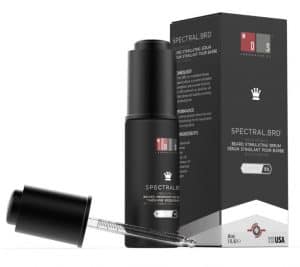

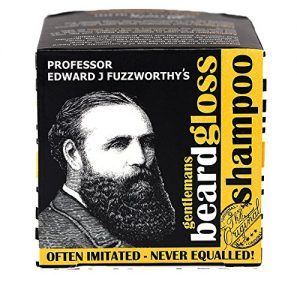
3 Comments
Nice to see this blog. This is very informative who is planning for a beard hair transplant. This blog is very useful to everyone. keep it up for more blogs like this.
Read the first of The Twits, by Roald Dahl.
Can a beard transplant give somebody with no facial hair a full natural-looking beard ?